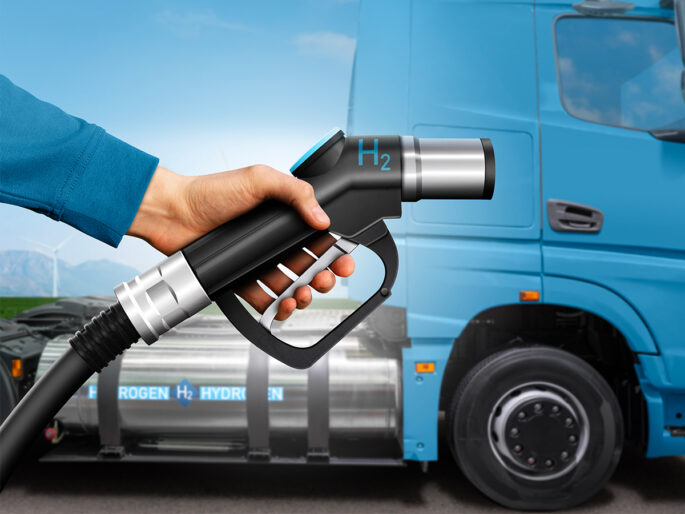Hydrogen is emerging as a viable fuel option for achieving zero-emission long-haul trucking. In fact, PACCAR and Toyota Motor North America Inc. announced they are developing zero-emission, hydrogen fuel cell electric vehicles (HFCEVs) for the brands of Kenworth and Peterbilt trucks, with deliveries planned for 2024.
And although expansion is on the horizon, there are several factors likely to impact the fuel’s viability. Here are 5 considerations from a recent North American Council for Freight Efficiency (NACFE) report.
1. Characteristics of Hydrogen
Hydrogen has a high energy content per weight (higher than gasoline). However, the energy density per volume is quite low at standard temperature and pressure. To increase the volumetric energy density, hydrogen needs to be stored under increased pressure or at extremely low temperatures as a liquid.
2. A Pair of Powertrains Emerge
HFCEVs have dominated research and development. In fact, Ronn Motor Group is establishing a dedicated logistics division that will launch medium-duty HFCEVs. However, the recent advancement of hydrogen internal combustion engines (ICEs) have the capability of going longer distances with shorter refueling times and they weigh less than a battery electric vehicle specified to do the same job. The hydrogen ICE also preserves the conventional powertrain and will likely have a significantly lower initial cost than an equivalent fuel cell truck, the NACFE report said.
Hydrogen trucks also need to be purpose-built for their specific duty cycles, which will likely severely limit resale of the trucks. That notwithstanding, the potential for fuel cell trucks to operate 24 hours a day could help justify capital and operational investments in hydrogen.
3. Production, Technology and Infrastructure
Significant amounts of electricity are required to produce hydrogen. Identifying an appropriate pathway to the energy needed for hydrogen production is part of development efforts.
Additionally, consensus needs to be reached on whether to pursue gaseous or liquid hydrogen. The storage of gaseous or liquid hydrogen impacts both the truck design as well as how the fuel would be hauled. According to NACFE, automotive hydrogen fueling stations will not be able to support heavy-duty trucks due to the significantly different volumes of fuel needing to be dispensed per vehicle.
4. Demand and Scale
Hydrogen costs will decrease as hydrogen plants increase. But large-scale production requires multiple industries to increase demand for hydrogen — trucking alone is insufficient to reach the demand needed to justify large hydrogen plants. The oil industry seems to be eyeing hydrogen as a means to maintain market prevalence. Shell and BP are reported to be actively promoting hydrogen as a fuel to replace gasoline and diesel.
5. Policy and Support
State and federal efforts to accelerate hydrogen adoption have intensified the past couple of years. The U.S. Department of Energy’s (DOE) Regional Clean Hydrogen Hubs (H2Hubs) program includes $7 billion to establish six to 10 regional hubs. The purpose of the hubs is to demonstrate the viability of the production, processing, delivery, storage and end-use of clean hydrogen in a region of the U.S.
The DOE is reviewing H2Hubs proposals from several entities and plans to announce funding awards this fall. The Midwest Alliance for Clean Hydrogen — comprising Illinois, Indiana, Kentucky, Michigan, Missouri, Minnesota and Wisconsin — is among the partnerships coming forward to demonstrate the fuel’s viability. Learn more about DOE Hub efforts from the Clean Air Task Force.




